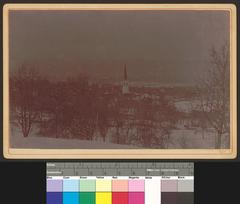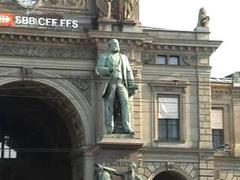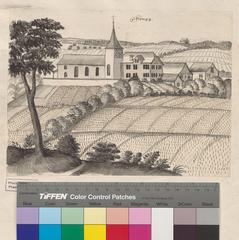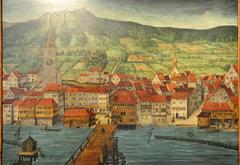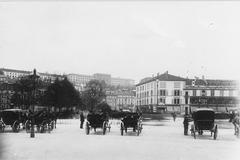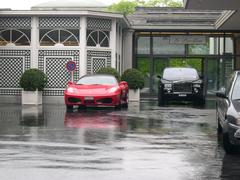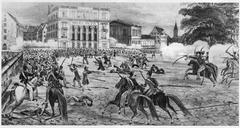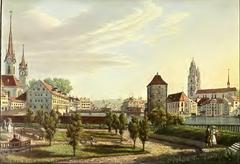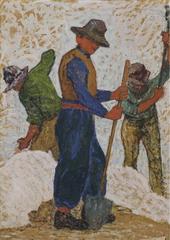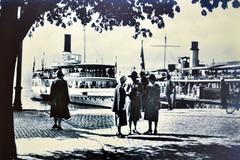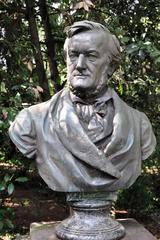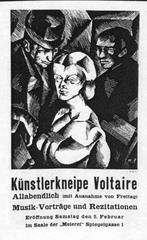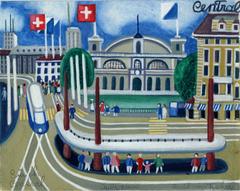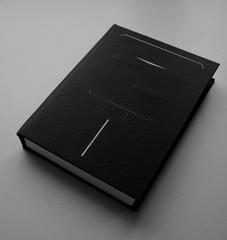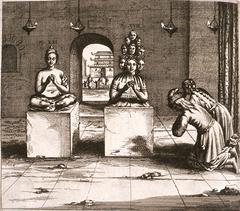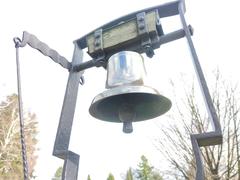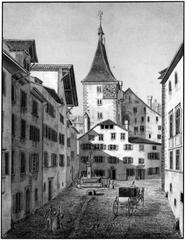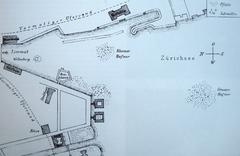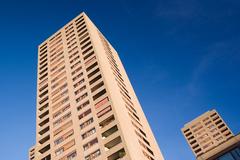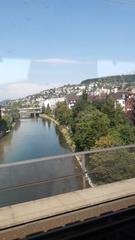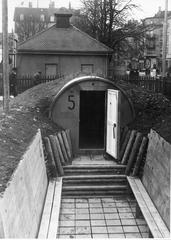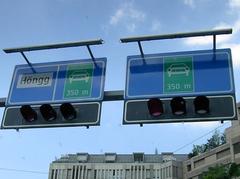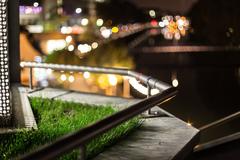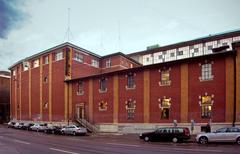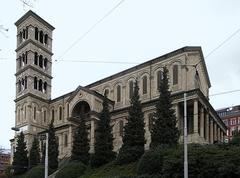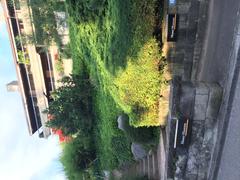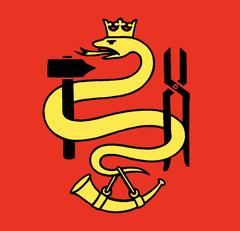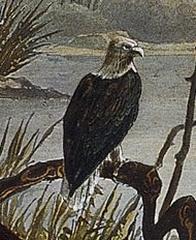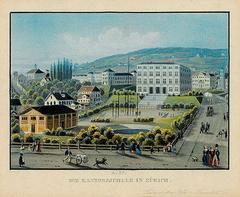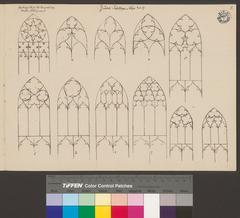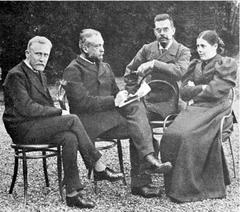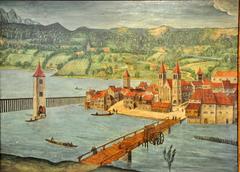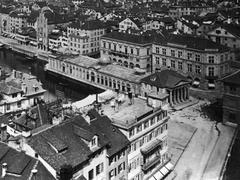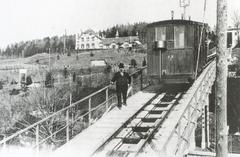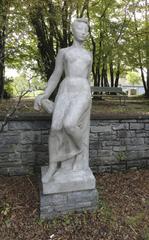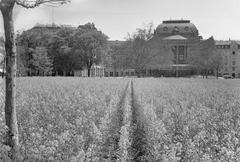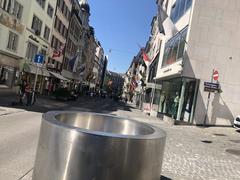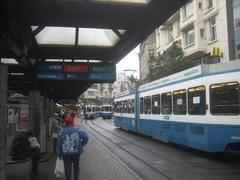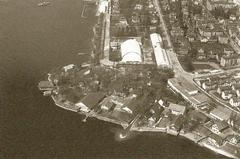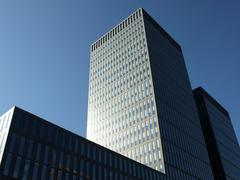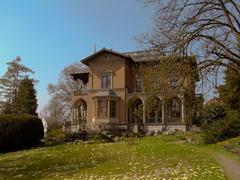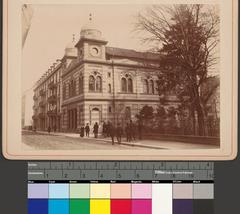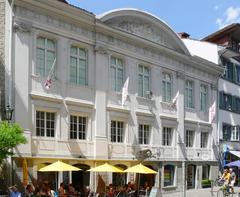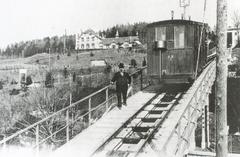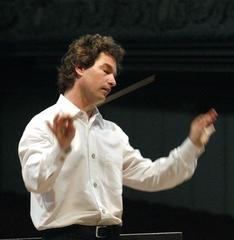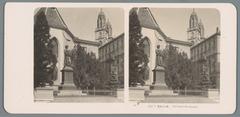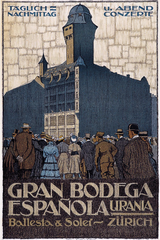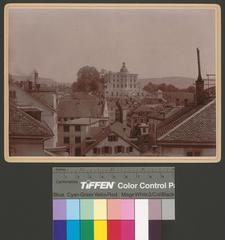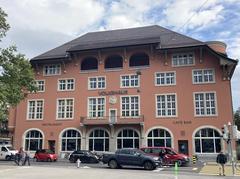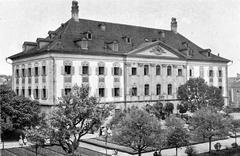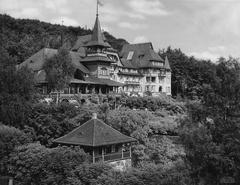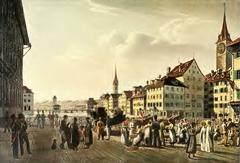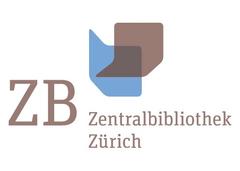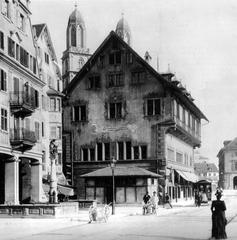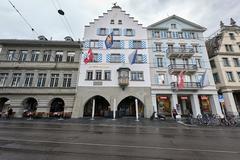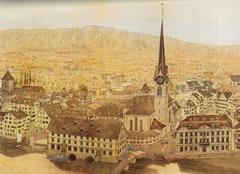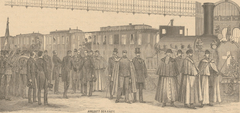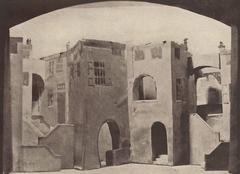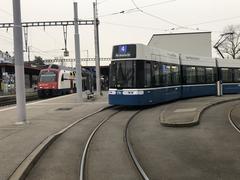Visitor Guide for Besucherzentrum Wildnispark Zürich in Zürich, Switzerland
Date: 19/07/2024
Introduction
Nestled in the heart of Zürich, Switzerland, the Besucherzentrum Wildnispark Zürich is a premier destination that seamlessly blends natural beauty, historical significance, and educational opportunities. Established in 1943 during World War II, this remarkable park was created as a sanctuary for wildlife and a haven for nature enthusiasts. Over the decades, it has transformed from a nascent conservation area to a leading model of sustainable wildlife management and environmental education (Wildnispark Zürich).
The park’s origins lie in the collaboration between the city of Zürich and various environmental organizations, who recognized the importance of preserving natural habitats and biodiversity. Over the years, the park has introduced several native animal species, including deer, wild boar, and lynx, aiming to recreate the natural ecosystems that once thrived in the region. The establishment of the Besucherzentrum, or Visitor Center, in the 1970s and 1980s marked a significant milestone, becoming the focal point for educational activities and visitor services (Wildnispark Zürich).
In the modern era, the Wildnispark has embraced advanced conservation techniques and expanded its role as an educational resource. One of its notable projects includes the reintroduction of the European bison, a species that had been extinct in the wild for nearly a century, highlighting the park’s commitment to species restoration and ecological monitoring. Visitors can explore the park’s extensive trails, observe wildlife in naturalistic settings, and participate in various educational programs designed to foster a deeper appreciation for nature (Wildnispark Zürich).
Table of Contents
- Introduction
- Origins and Establishment
- Development Over the Decades
- Modern Era and Conservation Efforts
- Cultural and Historical Significance
- Key Historical Milestones
- Historical Artifacts and Exhibits
- Visitor Information
- Special Events and Tours
- Photographic Spots
- Frequently Asked Questions (FAQ)
- Conclusion
Origins and Establishment
The Besucherzentrum Wildnispark Zürich was officially established in 1943, during World War II, as a means to preserve the natural environment and provide a sanctuary for wildlife. The park was founded by the city of Zürich in collaboration with various environmental organizations and local stakeholders who recognized the importance of conserving natural habitats.
Development Over the Decades
In the decades following its establishment, the Wildnispark underwent significant development and expansion. The 1950s and 1960s saw the introduction of various animal species native to the region, including deer, wild boar, and lynx. These additions were part of a broader effort to recreate the natural ecosystems that existed in the area before human intervention.
During the 1970s and 1980s, the park expanded its educational programs, introducing guided tours, workshops, and interactive exhibits aimed at raising awareness about environmental conservation. This period also saw the construction of the Besucherzentrum, which became the focal point for educational activities and visitor services. The center was designed to blend seamlessly with the natural surroundings, using sustainable materials and energy-efficient technologies.
Modern Era and Conservation Efforts
In the 21st century, the Wildnispark has continued to evolve, embracing modern conservation techniques and expanding its role as an educational resource. The park has become a model for sustainable wildlife management, employing practices such as habitat restoration, species reintroduction, and ecological monitoring. One of the most notable projects in recent years has been the reintroduction of the European bison, a species that had been extinct in the wild for nearly a century. This project, launched in 2010, has been a significant success, with the bison population thriving in the park’s protected environment (Wildnispark Zürich).
Cultural and Historical Significance
The Wildnispark holds a special place in the cultural and historical landscape of Zürich. It serves as a living testament to the city’s commitment to environmental stewardship and sustainable development. The park’s history is intertwined with the broader environmental movement in Switzerland, which has long been a leader in conservation efforts. The establishment and growth of the Wildnispark reflect the evolving understanding of the importance of preserving natural habitats and biodiversity.
The park also plays a crucial role in the local community, providing a space for recreation, education, and scientific research. It attracts thousands of visitors each year, including school groups, families, and tourists from around the world. The educational programs offered at the Besucherzentrum are designed to foster a deeper appreciation for nature and inspire future generations to take an active role in conservation efforts.
Key Historical Milestones
- 1943 - Establishment of the Wildnispark Zürich.
- 1950s-1960s - Introduction of native animal species and habitat restoration projects.
- 1970s-1980s - Expansion of educational programs and construction of the Besucherzentrum.
- 2010 - Launch of the European bison reintroduction project.
- 2020s - Continued focus on sustainable wildlife management and ecological research.
Historical Artifacts and Exhibits
The Besucherzentrum houses several historical artifacts and exhibits that provide insight into the park’s history and the broader environmental movement in Switzerland. These include:
- Archival Photographs - A collection of photographs documenting the park’s development over the decades, showcasing the changes in the landscape and the various species that have been introduced.
- Historical Documents - Original documents related to the park’s founding, including correspondence between the city of Zürich and environmental organizations, as well as early management plans and conservation strategies.
- Interactive Exhibits - Modern exhibits that use interactive technology to educate visitors about the park’s history, the species that inhabit it, and the ongoing conservation efforts. These exhibits are designed to be engaging and informative, making use of multimedia elements such as videos, touchscreens, and augmented reality.
Visitor Information
Visiting Hours - The park is open daily from 9 AM to 6 PM. The Besucherzentrum’s visiting hours may vary seasonally, so it’s advisable to check the official website for the most up-to-date information.
Tickets - Admission to the park is free, but certain special exhibits and guided tours may require tickets. Prices for these can be found on the official website or at the Besucherzentrum.
Travel Tips - The park is easily accessible by public transport from Zürich. Ample parking is available for those traveling by car. Comfortable walking shoes are recommended as the park features extensive trails.
Nearby Attractions - While in the area, consider visiting other historical sites in Zürich, such as the Swiss National Museum and the Old Town (Altstadt) to enrich your cultural experience.
Accessibility - The park is wheelchair accessible, and there are facilities to assist visitors with mobility issues.
Special Events and Tours
The Wildnispark hosts a variety of special events throughout the year, including seasonal festivals, wildlife observation nights, and educational workshops. Guided tours are available for those who wish to gain deeper insights into the park’s history, flora, and fauna. These tours can be booked in advance through the park’s website.
Photographic Spots
The park offers numerous picturesque spots ideal for photography. Popular locations include the bison enclosure, the scenic viewpoints along the hiking trails, and the lush forest areas teeming with native wildlife.
Frequently Asked Questions (FAQ)
What are the visiting hours of Besucherzentrum Wildnispark Zürich? The park is open daily from 9 AM to 6 PM, but it’s best to check the website for seasonal variations.
How much are the tickets for Besucherzentrum Wildnispark Zürich? Admission to the park is free. However, certain special exhibits and guided tours may require tickets, which can be purchased through the official website.
Is the Wildnispark wheelchair accessible? Yes, the park is wheelchair accessible, and facilities are available for visitors with mobility issues.
Conclusion
The Besucherzentrum Wildnispark Zürich stands as a testament to the enduring importance of environmental conservation and education. From its establishment during World War II to its current status as a leading conservation area, the park has played a crucial role in preserving Zürich’s natural heritage and inspiring future generations to protect the environment. Its rich history, coupled with modern conservation efforts, offers visitors a unique and enriching experience that underscores the significance of preserving natural habitats and fostering biodiversity (Wildnispark Zürich).
Whether you’re a local or a tourist, a visit to the Wildnispark provides an opportunity to connect with nature, learn about sustainable wildlife management, and participate in various educational and recreational activities. The park’s commitment to accessibility ensures that everyone can enjoy its natural beauty and educational offerings. By engaging with the park’s diverse attractions, from the Langenberg Wildlife Park to the Sihlwald Forest, visitors can gain a deeper understanding of the ecological and cultural importance of this remarkable sanctuary. For more information on visiting hours, tickets, and special events, be sure to check out the park’s official website and stay updated through their social media channels.
References
- Exploring the Rich History of Besucherzentrum Wildnispark Zürich - Visiting Hours, Tickets, and More, 2023, Wildnispark Zürich
- Explore Wildnispark Zürich - Visiting Hours, Tickets, and More, 2023, Wildnispark Zürich
- Discover Wildnispark Zürich - Visitor Information, Attractions, and Tips, 2023, Wildnispark Zürich
